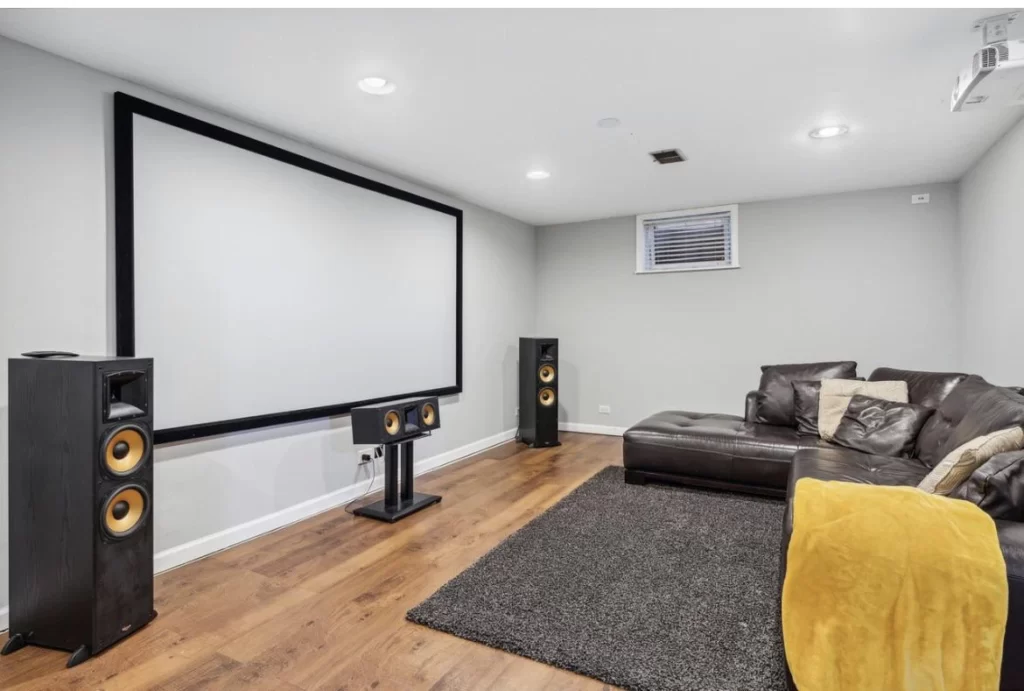
Basements are usually a favorite place of molds and moisture. Due to dampness, basement can suffer from unwant mold growth, bad odour and uncontrollable moisture.To tackle this, waterproofing your basement maybe the the foremost choice to start your basement finishing project.
However, choosing best paint for concrete basement walls is also a great idea for a budget friendly aesthetic transformation. But in humid basements, painting your basement concrete walls need more attention and diligence. So don’t worry, in this article we’ll explain the crucial and basic steps to paint your brick walls/concrete walls to get rid of moisture once and for all.
Step 1: Prepare the area
Preparing the area is an important step in ensuring the basement painting. Begin by removing any furniture, belongings, or things that could block the painting process from the basement. Use heavy-duty drop cloths to protect the floors from unintentional paint spills or splatters.
Use painter’s tape to fix these coverings and create neat lines along the margins of the floor and any nearby surfaces. Open windows and doors as much as possible throughout the painting process, and consider utilizing fans to improve air circulation. Additionally, sufficient illumination is required to assess the paint application accurately.
Before starting a basement painting, it is important to protect areas that you do not want to be painted, such as doors and windows, with plastic sheeting or painter’s plastic. By taking these thorough measures to prepare the area, you can ensure that the painting project will be well-executed while also minimizing the chance of damage to surrounding objects.
Step 2: Create a smooth surface
To paint basement walls, achieving a flat surface is crucial for a professional and polished finish. Start by carefully examining the walls for any flaws, such as cracks or holes, and address these issues by using a high-quality patching material that blends in with the surrounding surface. Once the compound has dried, use fine-grit sandpaper to gently smooth out any inequalities, resulting in a uniform texture over the walls.
To achieve a visually appealing and long-lasting result in your basement painting project, it is important to prioritize the removal of sanding dust. This can be done by using a tack cloth, which ensures a pristine canvas for the subsequent paint application. By dedicating yourself to achieving a flawlessly smooth surface, you will lay the groundwork for a successful project.
Step 3: Prime and paint basement walls
After properly preparing the surface, the next step in renewing basement walls is to apply primer, followed by the transforming act of painting.
1. Priming the Surface:
Begin by selecting a best primer for basement walls, focusing on properties such as moisture resistance and paint compatibility. Apply the primer evenly with a high-quality brush or roller, being sure to cover the entire surface. The primer serves as an important foundation, improving paint adhesion and adding an extra layer of protection against any moisture problems.
2. Choose the Right Paint:
Choosing the right paint for basement walls is important. Select a mold-resistant paint designed for basement conditions. Consider the desired finish—matt, satin, or semi-gloss—and select colors that match the overall look of the area.
Step 4: Apply a second coat
Applying a second coat is critical for achieving a flawless and long-lasting finish on basement walls after the first coat has been properly dried.
How to paint basement brick walls
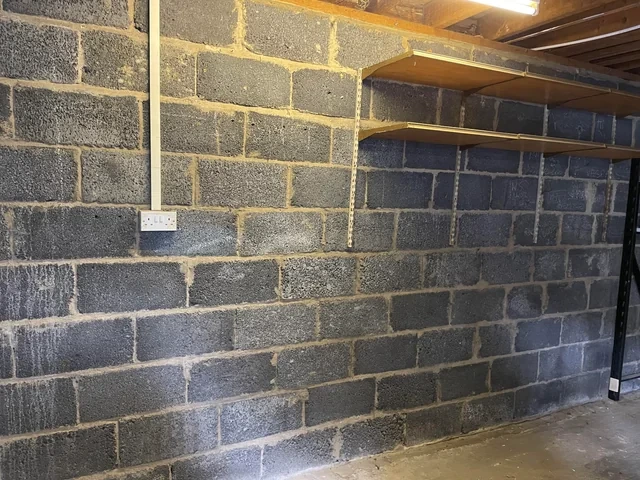
When it comes to remodeling basement ideas on budget, many homeowners are inclined towards industrial designed basement with exposed ducts , concrete and ceilings. It gives the basement a rustic, edgy and raw look. However, if you want to alter basement brick walls paint, you need to follow these steps for desirable results.
Step 1: Prepare the brick
Preparing basement brick walls for painting is similar to preparing a canvas before painting. Firstly, scrape off any dirt or loose debris from the bricks. If there are any cracks or holes, fill them. You can smooth out the surface by sanding it. Use cloths and tape to protect the floor and surrounding areas.
Step 2: Apply watered down bleach
To paint basement interior brick walls, cleaning with watered-down bleach is an important step before painting. Before proceeding with the next painting procedures, make sure the bricks are totally dry. This method effectively removes dirt, stains, and mold, leaving a clean canvas for a new paint job. Additionally, before selecting paint for you basement walls, you can check Basement wall paint estimator Canada for a free quote.
Step 3: Prime the brick wall
After cleaning and drying the brick walls, the next important step is to apply a primer before painting.
Choose the right primer:
Choose a high-quality masonry primer designed for brick surfaces. This promotes optimal adherence and increases the life of the paint.
Prepare the primer:
To create a consistent texture, thoroughly stir the primer. Before using it, make sure it is thoroughly combined.
Apply the primer:
Apply primer evenly to whole brick surface with brush or roller. Pay extra attention to mortar joints and areas with excess water during washing.
Step 4: Paint the brick wall
- While basement renovation in Toronto, give your basement walls a new look, choose a good quality brick wall paint in your preferred color. Start by using a brush to paint the edges and corners, then use a roller to paint the larger areas of the brick. It’s best to work in sections and allow each coat to dry before adding another layer. If the color isn’t vibrant enough after the first coat, add more until it reaches the desired shade.
- How to paint concrete basement wall:
- Prepare the surface and eliminate all the mould and moisture which can cause musty smell.
- Wait till all basement walls are completely dried.
- Choose the right paint with cracks sealing properties to prevent your walls from any erosion and bumps.
- Apply a concrete primer
- Paint the concrete walls in accordance with overall aesthetic of the space
- Final touches and cleanup
Should I paint basement brick wall?

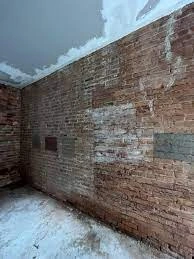
The decision to paint your basement brick walls is influenced by a variety of factors, including your personal preferences and the unique aspects of your room. Painting basement brick walls can have various benefits:
Benefits of painting Basement Brick Walls the Finished Basement
- Aesthetic Enhancement:
Paint may create a clean, modern look while also allowing you to tailor the appearance of your basement to reflect your overall design concept.
- Moisture Protection:
Paint works as a barrier, preventing moisture from penetrating the bricks. Painting the walls of your basement can be a sensible solution if it is moist.
- Ease of Maintenance:
When compared to exposed brick, painted surfaces are often easier to clean and maintain, making them a more practical alternative for some homeowners.
Brick staining by home painters in Toronto
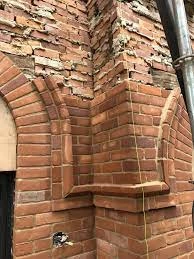
Brick staining by home painters in Toronto is a popular method for enhancing the appearance of brick surfaces. This method involves using specific stains or color washes to alter the bricks colors while maintaining their unique texture. High-quality, breathable stains that allow moisture to escape are commonly used by Toronto house painters to prevent potential issues. Staining provides a diverse and customizable solution to improve the look of your home’s interior or exterior. Professional home painters in Toronto can effectively apply brick paint, offering a refreshed and personalized finish to your home’s brickwork, whether you prefer a contemporary or classic design.
Steps on how to paint basement brick wall
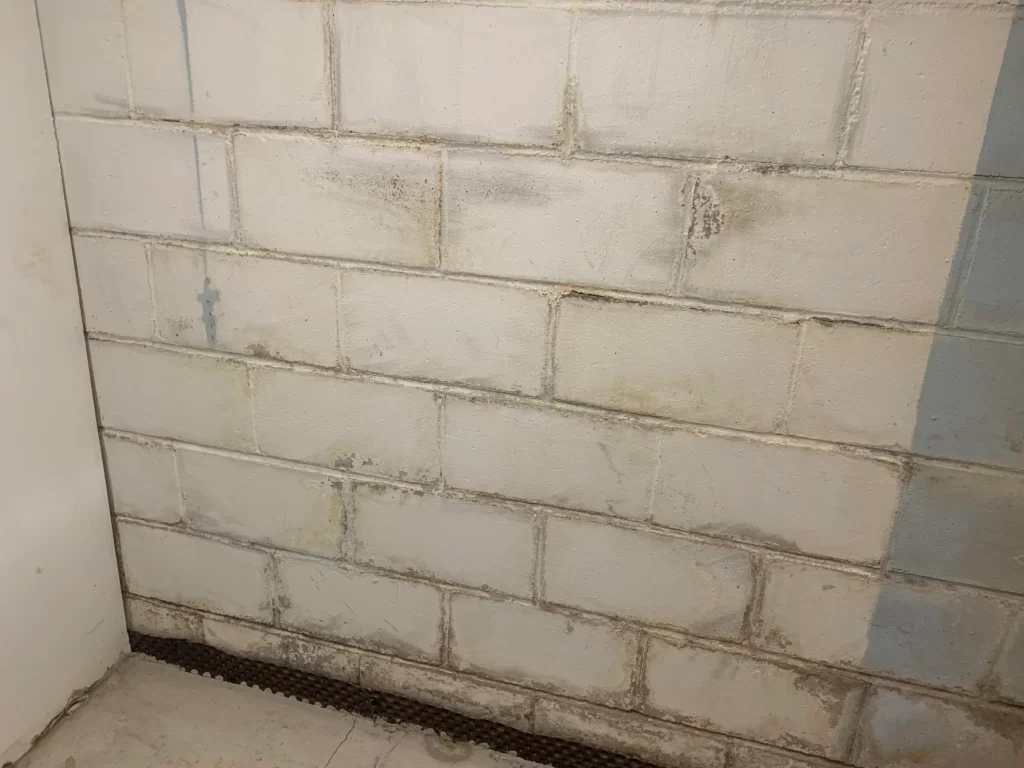
- Clean the walls thoroughly before painting them.
- You need to ensure that there is no efflorescence left on the walls. Efflorescence on painted drywall exposed brick basement. Efflorescence is a powder-like salt deposit that forms on brick or concrete walls due to moisture that has evaporated from the walls.
- You can use a brush to wipe it away or a gentle power wash. After that, rinse the walls well with water.
- Also, make sure to remove any mildew or mold from the walls. You can use a mild bleach solution to clean them. Once you’re done, allow the brick walls to dry completely.
- If there are any gaps or cracks in the walls, use concrete fill to fill them up.
- Lastly, the walls should be primed and painted. Be sure to use a primer and paint that are specifically designed for below-grade interior masonry.
Wrap up
We hope this article will help you if you are looking for painting your unfinished basement walls. Choosing the right paint for your basement walls enables you to have mold/mildew free walls in a cost effective manner. So if you are also looking for the best basement wall painting ideas, reach out to us today and explore infinite possibilities and wonderful paint ideas for your basement renovation venture now.


